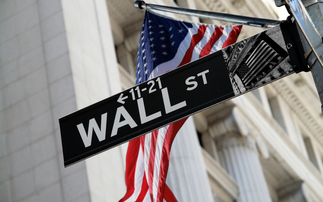A hung parliament in the UK creates a great deal of uncertainty for investors. Thankfully, opportunities are still plentiful across the Channel. Chanchal Samadder, Head of Equity Strategy, tells us more.
Too high to buy?
Broad European indices are up around 15% over the last six months and are close to the multi-year peaks they reached in 2000, 2007 and 2015 - three instances when they subsequently corrected. This time around the improving economic and political situation, attractive relative valuations and a degree of under-allocation by investors should keep the bears from the door.
European equities are no longer cheap, and many investors are asking just how much upside is left. In our view, the valuation gap with the US makes them an attractive proposition especially given better economic momentum and a pick-up in inflation. Still, it could be time to broaden your horizons.
Room to run
79% of the companies in the STOXX 600 are less than 10% away from their 52-week highs, which suggests the rally has been fairly indiscriminate and that forgotten "gems" are few and far between. However, European equities are coming from far further back than their US counterparts so they still have room to run.
% of STOXX 600 companies near 1 & 10-yr highs
Investors have ploughed $15 billion into European equity mutual funds and ETFs since the start of the year, but haven't yet come close to reversing the $100 billion of outflows we saw in 2016. More inflows are likely to follow, but some caution is needed: the euro's new found strength and frailties in the US market call for more of the selectivity we started to see in May. Until then, flows had focused on broad indices and large-caps, but small- and mid-caps have enjoyed a much greater share recently.
Currency complexities
May was the euro's best month in eight years, to the detriment of markets and companies reliant on overseas trade. Such was the price of Emmanuel Macron's election in France. All eyes are now on the second round of the parliamentary elections, on 18 June, and the insight they will give into the likelihood of economic reform over the next five years. Macron's likely-looking majority could rekindle the euro's flame.
Even if he doesn't win an absolute majority, a number of key reforms could go through given the constructive tone of many candidates from the right and left. The ECB may choose to manage the resulting appreciation rather than face a fall back in inflation expectations.
Hit the mids
For return seekers, it becomes a question of how best to marry the search for upside with the desire to avoid the headwinds the strong euro poses for broad, large-cap indices. The answer lies in index exploration.
Some country indices will be more affected than others, especially those like the DAX, which get the majority of their revenues from overseas. Markets like the CAC, IBEX and MIB are less reliant on international trade (getting 57%, 61% and 60% of their revenues from the EU respectively).*
With Dutch and French elections behind us, and risk seemingly contained in Germany, Italy has taken centre stage. We are wary of political stress in the eurozone's third-largest and second-most indebted country, especially as early elections remain possible, but it could be an attractive time to enter what's still a cheap market.
The next layer down could, however, be more attractive. It's not somewhere most investors naturally look, but mid-cap indices generate more of their revenues domestically than their larger peers. Companies in Germany's MDAX index, for example, generate almost 60% of their revenue from the EU, while for France's CAC Mid-60 that number is higher again at almost 70%*. Macron's potential tax reforms could add further support. And, unlike some European assets, French assets haven't overshot yet.
Mid-cap indices tend to have a much higher exposure to cyclicals (at least 20% typically) but they aren't always as volatile as their reputation suggests. These days, the hot money tends to focus on ultra-liquid large-caps. That's especially true in mainland Europe where the MDAX and CAC Mid-60 have been marginally less volatile than their large-cap peers since the Global Financial Crisis.
Don't skip sectors
Better data and a potential post-election ramp up in infrastructure spending should support domestic-oriented sectors like Banks and Construction & Materials, both of which also generate most of their revenues domestically. Banks are still deep value, and represent a cheap way to play eurozone reflation, despite 80% of them being in touching distance of their 1-yr highs. Only 17% are within 10% of their 10-year highs however, so it's worth taking valuations into account as well as price action.
Rampant consumer confidence and the stronger employment picture should prove beneficial for the retail and autos & parts sectors - neither of which have really ridden the wave of European markets so far. In fact, with no consumer to speak of, returns have been extremely disappointing for retailers for some time. We now expect consumption to be the key engine for growth into 2021, so earnings should turnaround significantly.
Elsewhere, companies in inflation-geared sectors like Oil & Gas and Basic Resources have been hampered by lower oil prices and inflation expectations. Basic Resources in particular is back in deep value territory, but profitability is improving and demand from China looks more assured.
Why choose Lyxor for European equities?
Disclaimers:
Source: SG Research, European Equity Strategy Team. Lyxor ETF Research, June 2017. *All revenue breakdowns sourced from Factset, 1 & 5 June 2017. Opinions expressed are as at 1 June 2017. Past performance is no guide to future returns.
This communication is for professional clients and qualified investors only.
This document is for the exclusive use of investors acting on their own account and categorised either as "Eligible Counterparties" or "Professional Clients" within the meaning of Markets In Financial Instruments Directive 2004/39/EC.
This document is of a commercial nature and not of a regulatory nature. This document does not constitute an offer, or an invitation to make an offer, from Société Générale, Lyxor International Asset Management or any of their respective affiliates or subsidiaries to purchase or sell the product referred to herein.
We recommend to investors who wish to obtain further information on their tax status that they seek assistance from their tax advisor. The attention of the investor is drawn to the fact that the net asset value stated in this document (as the case may be) cannot be used as a basis for subscriptions and/or redemptions. The market information displayed in this document is based on data at a given moment and may change from time to time. The figures relating to past performances refer or relate to past periods and are not a reliable indicator of future results. This also applies to historical market data. The potential return may be reduced by the effect of commissions, fees, taxes or other charges borne by the investor.
Lyxor International Asset Management (Lyxor ETF), société par actions simplifiée having its registered office at Tours Société Générale, 17 cours Valmy, 92800 Puteaux (France), 418 862 215 RCS Nanterre, is authorized and regulated by the Autorité des Marchés Financiers (AMF) under the UCITS Directive and the AIFM Directive (2011/31/EU). Lyxor ETF is represented in the UK by Lyxor Asset Management UK LLP, which is authorised and regulated by the Financial Conduct Authority in the UK under Registration Number 435658.













